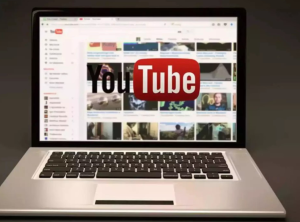The Future Is Interactive: Gaming, AI, and the Business World Collide

What happens when gaming stops being a pastime and starts running like a business? That shift isn’t coming, it’s already here. Gaming now influences how companies build systems, make money, and manage people. It’s not just about entertainment anymore. Entire business strategies are being shaped by models first tested in online games.
Nowhere is this more obvious than in the casino gaming space, especially with slots. But with hundreds of variations out there, how do these platforms keep things from becoming cluttered? That’s where content features like an all slots games list come in. They make it easier for players to see every option at once, no friction, no guessing.
This kind of structure is starting to look familiar across industries. But how deep does the influence go? And what can businesses learn from the way games are built, played, and even run by bots?
When Games Start Acting Like Economies
At what point does a game stop being just a game? When money starts moving in and out of its system, the label starts to shift. In some games today, players no longer need to play at all. Bots can run entire economies: farming, trading, and collecting while the actual user does nothing.
That’s not a future idea. That’s already happening. What makes this even more serious is the link to real-world currency. As soon as in-game items or tokens are traded for dollars, it’s no longer just simulation. It becomes an economy.
Whether humans or bots run the system doesn’t matter anymore. What matters is that real value changes hands.The human layer just isn’t needed. But does that make it less real?
Business Lessons From Gaming Setbacks
Gaming has not been immune to market pressure. The business side is now exposed to the same issues seen in tech and finance. In 2023, over 10,000 jobs were cut in the gaming sector. The trend continued into 2024, with another wave of layoffs including major players like Microsoft.
One key case was Microsoft’s $68.7 billion acquisition of Activision Blizzard. The goal was to lock in content and control more of the market. But after the deal, job cuts followed due to lower-than-expected returns.
What does this say about where things are headed? It shows that gaming now follows business cycles just like any other sector. Growth comes with risk. Businesses looking at gaming systems need to study both the wins and the failures.
How AI Changes the Game (and the Work)
AI in gaming is not new. But the way it’s used now is different. Early systems handled enemies or made characters behave in predictable ways. Now, AI can generate full maps, write dialogue, balance difficulty, and predict player behavior. This changes how games are made, and who can make them.
Game studios no longer need large teams to build large systems. Smaller groups can do more by using AI to take on the most time-heavy jobs. Natural language tools are also changing player interaction. Characters now respond more like real people.
This level of adaptation is being copied outside of gaming. Companies now use the same models for real-time feedback, predictive planning, and customer support. What once served players now serves businesses trying to move faster and smarter.
A Model That’s Already Spreading
Gaming systems aren’t staying in gaming. Businesses are picking up these models and applying them in other areas. They see how automation, content layering, and feedback loops can be used in customer service, digital sales, and employee platforms. The systems are tested, the results are clear, and the structure works.
This is where design meets profit. Games may look simple on the surface, but the systems under them are now setting standards for how products run, how services are built, and how people work. What used to be for play is now teaching business how to move faster without falling apart.



